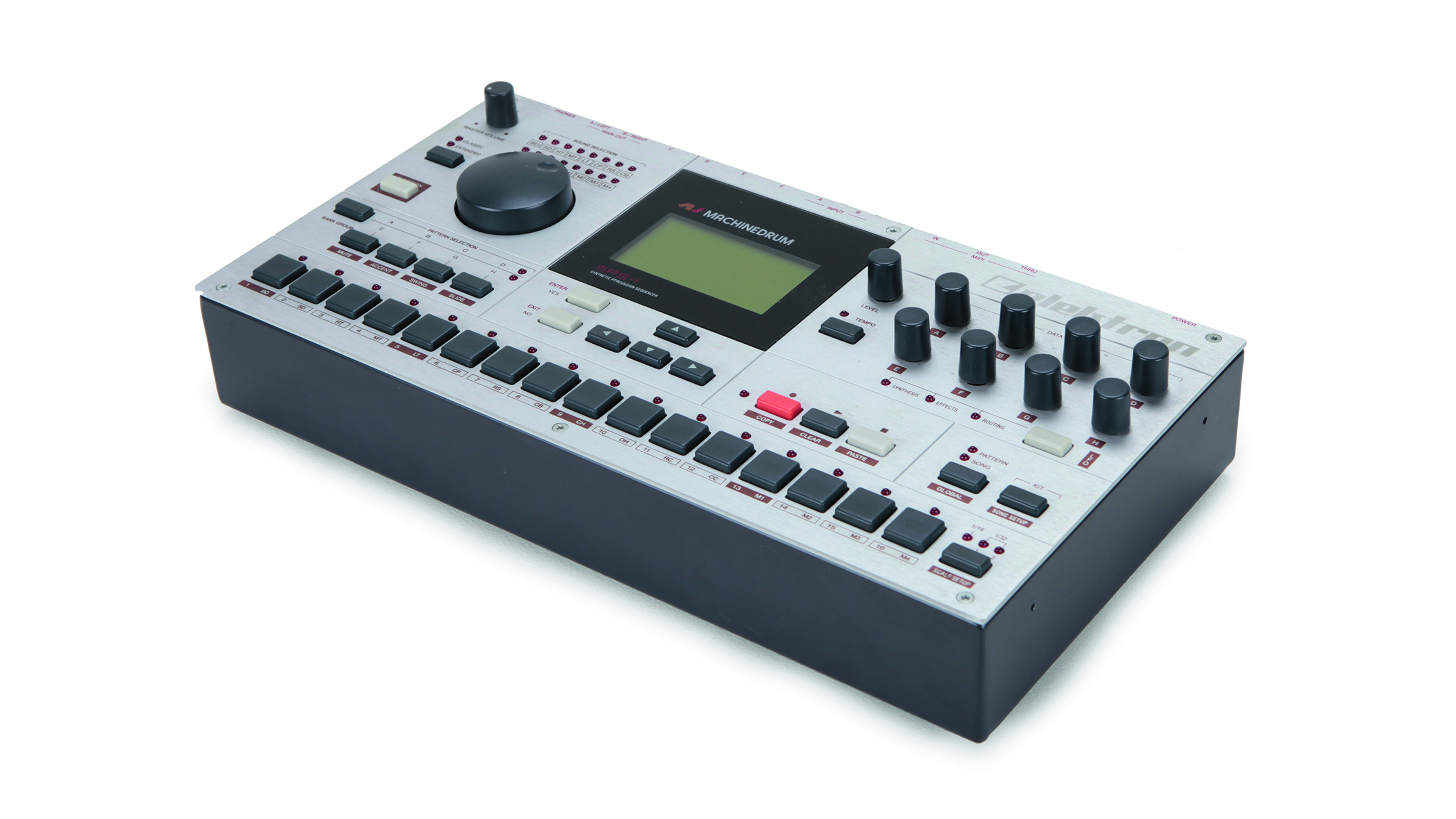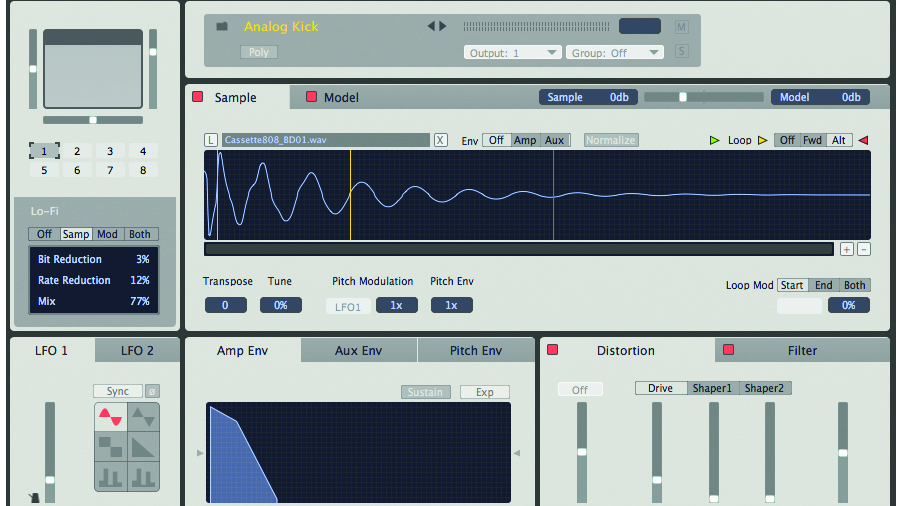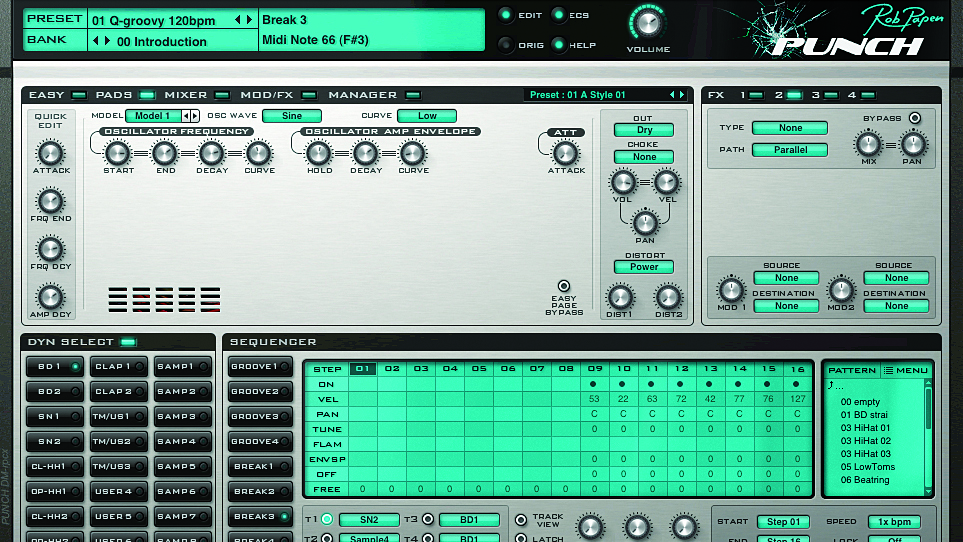Blast from the past: Elektron Machinedrum SPS-1
Elektron’s metronomic masterpiece reignited interest in drum machines and secured the quirky company’s place in the history of electronic music

In the 1980s, drum machines were ubiquitous. Initially available only to the moneyed few, as the cost of computer tech plummeted, so did the price of drum machines new and used, allowing access to all.
Eventually, sequencer-equipped sample-playback ‘workstations’ would push the drum machine out of the limelight, and by the 1990s, they were seen as little more than metronomes and practice aids for would-be guitar heroes.
It was, therefore, something of a shock when up-and-coming Swedish outfit Elektron followed up its popular SidStation synthesiser with a dedicated – and decidedly electronic – drum machine in 2001. Dubbed the Machinedrum SPS-1, it would reshape what a modern beatbox could be, even while wearing its influences proudly on its brushed aluminium sleeve.
With the Machinedrum, the emphasis was squarely on the ‘machine’. While it was perfectly capable of producing realistic drum sounds (especially in the sampling UW incarnation), the patterns were very much ‘on the grid’, placed there not by finger drumming on the velocity-sensitive pads of most machines, but via clacking and decidedly insensitive buttons splayed across the panel’s lower edge.
While such archaic note entry would have been universally panned by those who were seeking out so-called ‘real’ rhythms, it was ideal for dance and IDM musos. Those same musicians lapped up the Machinedrum’s realistic recreations of x0x-style beatboxes that, while digitally derived, could be made to sound very much like the real thing.
Better still, they were just the tip of the iceberg, as the SPS-1 also offered another four synthesis methods, each one with a unique subset of ‘machines’ dedicated to specific types of drum sounds (bass, snare, etc). In turn, each machine had its own unique set of tweakable parameters.
The aforementioned x0x-like TRX synth was joined by the FM-based EFM engine; the physical modelling PI synth; a 12-bit sample-playback synth in the form of E12; and the utilitarian GND, used to generate noise or sine waves, as well as allowing the inputs around the back to be routed and processed.
Want all the hottest music and gear news, reviews, deals, features and more, direct to your inbox? Sign up here.
In 2005, the SPS-1UW brought two more machines that helped realtime sampling and playback of user waves. As well as the user-assigned machine, the Machinedrum’s 16 tracks offered EQ, sample-rate reduction, filtering, LFOs and effect sends.
All of this would earn the Machinedrum favour, but there was one more very important feature that pushed it over the top. Known as ‘parameter locking’, it allowed users to define the states of a vast number of synthesis and effects parameters for each step of a sequence. This meant that no two steps needed sound even remotely alike.
The Machinedrum was continually updated and occasionally upgraded by Elektron, eventually ending its lengthy lifespan in 2016 as the Machinedrum SPS-1UW+ MkII, which brought increases in power, pattern length, and onboard storage space.
Elektron still makes drum machines, though these days, they’re largely based on analogue and/or sampling. The company is rightly proud of the Machinedrum.
Three great plugin alternatives
AudioSpillage Elektroid

While few plugins are going to be as fully-kitted out as the Machinedrum, some offer a similar combination of synthesis and sampling. Elektroid is one example, with four different synthesis models and drag-and-drop sample support, plus a built-in sequencer and effects. Their DrumSpillage 2 offers more models, but ditches the sampling.
Rob Papen Punch

Again, Rob Papen Punch isn’t going to replace Elektron’s beatbox classic, but it provides a healthy selection of sampled sounds and combines them with some rather powerful drum-based synthesis. User sample support is also here. Additionally, there’s a slightly unusual layered sequencer and a comprehensive effects section to spice things up.
iZotope BreakTweaker

The most expensive of our group, BreakTweaker is the one that arguably comes closest in spirit to the power of the Machinedrum’s groundbreaking sequencer. Produced in collaboration with one-time trance darling BT, BreakTweaker’s sequencer offers oodles of control over the synthesised drum sounds, plus some clever timing options.


Computer Music magazine is the world’s best selling publication dedicated solely to making great music with your Mac or PC computer. Each issue it brings its lucky readers the best in cutting-edge tutorials, need-to-know, expert software reviews and even all the tools you actually need to make great music today, courtesy of our legendary CM Plugin Suite.
